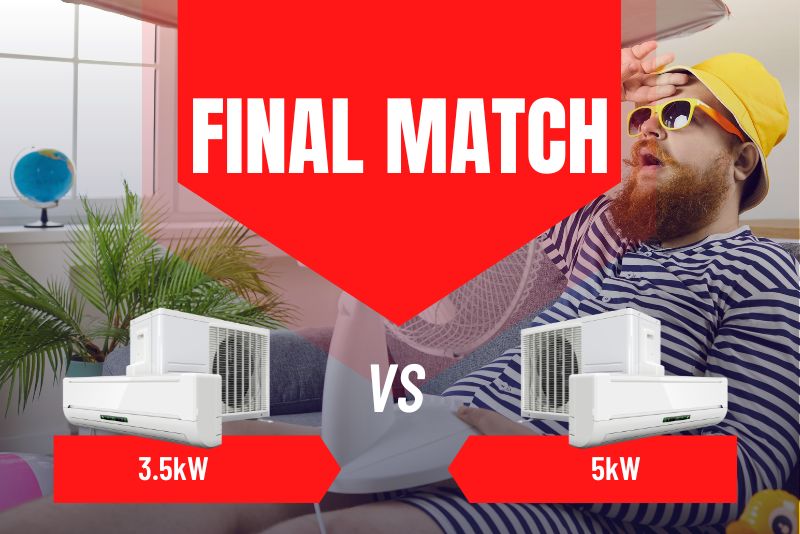Choosing the right size air conditioner for your home is essential for staying comfortable during the hot Brisbane summers while keeping your energy bills in check. If you’re trying to decide between a 3.5 kW and a 5 kW air conditioning unit, this guide will help you understand the differences and which option best suits your space.
What Do kW Ratings Mean?
The kW rating of an air conditioner indicates its cooling capacity. The larger the kW, the more powerful the air conditioner, and the larger the room it can cool effectively. However, choosing an air conditioner that is too large for your space can be inefficient and costly, just as choosing one that is too small can be ineffective.
Room Size and Cooling Capacity
To choose between a 3.5 kW and a 5 kW unit, consider the size of the room you want to cool. Here’s a general guideline:
3.5 kW air conditioner: Best for rooms up to 20-30 square metres (e.g., large bedrooms, small living rooms, or offices).
5 kW air conditioner: Ideal for rooms between 30-40 square metres (e.g., medium to large living rooms or open-plan areas).
To calculate the ideal kW capacity, measure the length and width of your room and multiply them to find the area. Multiply this figure by 0.15 kW for standard ceiling heights of 2.4 metres. This calculation will give you a rough estimate of the cooling capacity required.
Example:
For a living room that measures 6 metres by 5 metres (30 square metres), multiply the area by 0.15, which equals 4.5 kW. In this case, a 5 kW air conditioner would be the better choice to cool the space efficiently.
For smaller rooms, like a large bedroom measuring 5 metres by 4 metres (20 square metres), the calculation would give you 3 kW. Here, a 3.5 kW air conditioner would be ideal.
Efficiency Considerations
3.5 kW units are often more efficient for smaller rooms, preventing overcooling and maintaining energy efficiency. If your space is on the smaller side, a 3.5 kW air conditioner will run efficiently without consuming excessive energy.
5 kW units are designed for larger areas, offering powerful cooling for open-plan living spaces or larger rooms. While they provide more power, they can be inefficient in smaller rooms, leading to higher energy bills and discomfort from excess humidity.
Additional Factors to Consider
- Insulation and Windows: Poor insulation or large windows can impact the cooling efficiency of your air conditioner. In rooms with poor insulation or large windows, a more powerful unit, such as a 5 kW air conditioner, may be necessary to maintain a comfortable temperature.
- Climate: In Brisbane’s hot climate, you may need a larger air conditioning unit than in cooler areas. Rooms that receive a lot of sunlight or have high ceilings may also require a more powerful unit. Learn how air conditioning improves family life in Brisbane’s summer.
- Positioning: Correct positioning of the air conditioner is crucial for efficient cooling. Air conditioners should be installed high on the wall to allow cool air to circulate effectively throughout the room. See our guide on the best positioning for your AC unit.
Which One is Right for You?
Choose a 3.5 kW air conditioner if you are cooling a medium-sized bedroom, study, or small living room. This unit will be energy-efficient and provide consistent cooling without overworking.
Opt for a 5 kW air conditioner for larger spaces like living rooms, open-plan areas, or homes with poor insulation or a lot of direct sunlight. It will offer the power needed to cool these spaces efficiently.
Conclusion
Selecting the right air conditioner comes down to room size, insulation, and climate. A 3.5 kW air conditioner is a great choice for medium-sized rooms, while a 5 kW unit is more suited for larger, open-plan areas. To get expert advice tailored to your home’s needs, contact Brisbane’s Advanced Climate Solutions the air conditioning specialists today for a free quote.
You can also check out our article on how to choose the right air conditioning company to make sure you’re getting quality service.
Comparing a 2.5kW system vs a 3.5kW system? Read this article here.




